A liquid culture is a nutrient-rich solution containing mushroom mycelium, serving as a bridge between spore germination and colonization of a growth substrate. It is suspended in the liquid medium, providing an ideal environment for the mycelium to grow and expand. Liquid cultures play a crucial role in microbiology, particularly in mushroom cultivation, as they allow for rapid mycelium development before introducing it to the substrate.
- A liquid culture contains mushroom mycelium suspended in a nutrient-rich solution.
- It serves as a bridge between spore germination and colonization of a growth substrate.
- Liquid cultures are crucial in mushroom cultivation as they provide a head start for mycelium growth.
- They allow for rapid expansion of mycelium in a controlled and sterile environment.
- Mastering liquid culture techniques is essential for successful mushroom cultivation.
Importance of Liquid Culture in Microbiology
Table of Contents
Liquid culture plays a crucial role in microbiology, finding applications in research, industrial production, and medical diagnostics. It provides a versatile and efficient method for growing and expanding microbial populations in a controlled environment. By suspending mushroom mycelium in a nutrient-rich liquid medium, liquid cultures allow for rapid mycelium growth and can be easily stored and multiplied for future use.
One of the key benefits of liquid cultures is their ability to provide a head start for mycelium growth in a safe and controlled environment. This is especially valuable in mushroom cultivation, where mycelium expansion is a critical step. Liquid cultures also offer the advantage of being able to inoculate grains in non-sterile environments, making them accessible and practical for a wide range of growers.
However, working with liquid cultures does come with its challenges. One potential issue is the risk of contamination, which can be addressed through proper sterilization techniques and maintenance of sterile conditions. Additionally, liquid cultures require adequate agitation and oxygenation to ensure optimal growth. Despite these challenges, mastering the techniques of working with liquid cultures is a valuable skill for researchers and practitioners in the field of microbiology.
| Benefits of Liquid Culture |
|---|
| Provides a head start for mycelium growth in a safe environment |
| Allows for inoculation of grains in non-sterile environments |
| Efficient and scalable method for microbial growth |
| Easy to store and multiply for future use |
Liquid Culture Examples
“Liquid cultures are like nutrient-rich soups for mycelium, providing all the necessary ingredients for robust growth and expansion.” – [Expert Name]
Here are some examples of liquid culture applications in microbiology:
- Research: Liquid cultures are widely used in research laboratories to study microbial physiology, metabolism, and genetics. They provide a controlled environment for studying the growth and behavior of microorganisms, allowing researchers to conduct experiments and collect data.
- Industrial Production: Liquid cultures are utilized in various industries for the production of enzymes, antibiotics, and other bioactive compounds. The ability to scale up liquid culture production makes it an efficient method for large-scale fermentation processes.
- Medical Diagnostics: Liquid cultures play a crucial role in medical diagnostics, particularly in identifying and culturing pathogenic microorganisms. They are used for microbial identification, antibiotic susceptibility testing, and monitoring the growth and behavior of pathogens.
Overall, liquid cultures offer numerous benefits and applications in microbiology. Their efficiency, scalability, and versatility make them valuable tools in various research, industrial, and diagnostic settings. With proper techniques and precautions, liquid cultures can greatly enhance microbial cultivation and contribute to scientific advancements.
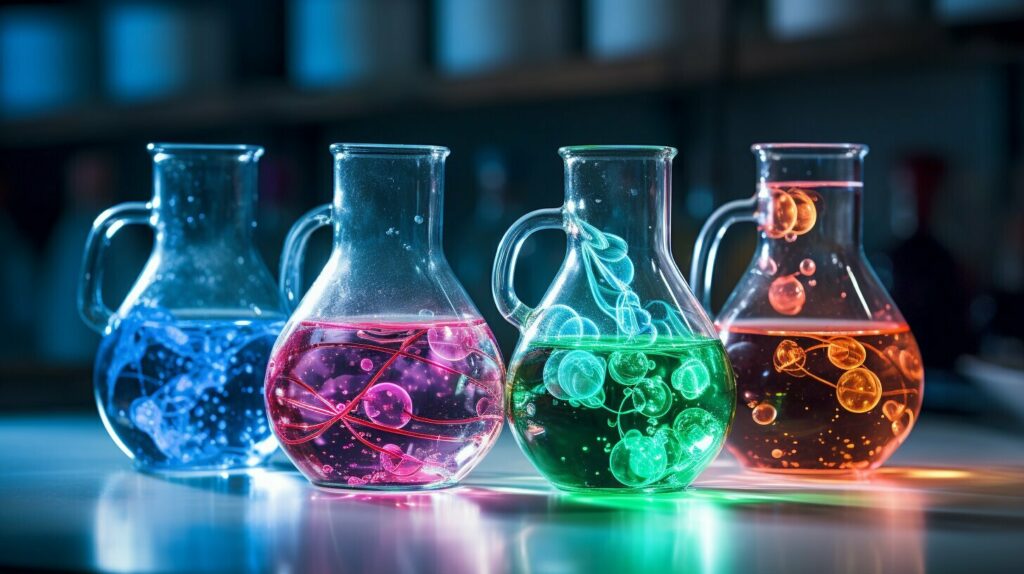
There are several types of liquid cultures that can be utilized in microbiology, each with its own unique composition and purpose. These cultures provide a suitable environment for the growth and expansion of microorganisms, including mushroom mycelium. Let’s explore some of the most common types:
PDA Liquid Culture
PDA (Potato Dextrose Agar) liquid culture is a widely used medium for cultivating various fungi species. It consists of a nutrient-rich broth derived from boiled potatoes and dextrose, which provides essential carbohydrates for fungal growth. PDA liquid culture supports the fast proliferation and mycelial development of many mushroom strains.
Grain-Based Liquid Culture
Grain-based liquid cultures are made by suspending mushroom mycelium in a liquid medium that contains grains as a nutrient source. Common grain types used include rye, millet, and wheat. These cultures serve as an intermediate step between spore germination and substrate colonization, allowing the mycelium to grow and expand before transfer to a growth medium.
Soy Peptone Liquid Culture
Soy peptone liquid culture is a nutrient-rich medium commonly used for the cultivation of bacteria and yeast. It is made by digesting soybean protein to create a peptone solution, which provides a balanced combination of amino acids, vitamins, and trace elements necessary for microbial growth. Soy peptone liquid culture can be used to study the metabolic activities and fermentation processes of different microorganisms.
These are just a few examples of the different types of liquid cultures used in microbiology. Each type has its own specific composition and applications, making them suitable for various research purposes. By selecting and utilizing the appropriate liquid culture, scientists and researchers can optimize the growth conditions and achieve desired outcomes in their experiments.
| Type of Liquid Culture | Composition | Common Applications |
|---|---|---|
| PDA Liquid Culture | Potato Dextrose Agar (PDA) | Fast proliferation and mycelial development of fungi |
| Grain-Based Liquid Culture | Grains (e.g., rye, millet, wheat) | Intermediate step between spore germination and substrate colonization |
| Soy Peptone Liquid Culture | Soybean protein (digested to create a peptone solution) | Study of metabolic activities and fermentation processes in microorganisms |
These examples provide a glimpse into the diverse range of liquid cultures available for microbiology research. Researchers can select the most suitable type based on the microorganism being studied and the specific objectives of their experiments.

Liquid culture offers numerous benefits for microbial growth and research, making it a preferred choice in many laboratory settings. It provides a controlled environment for the cultivation of mushroom mycelium, allowing for rapid and efficient growth. The mycelium is suspended in a nutrient-rich liquid, ensuring optimal nutrition for its development.
One of the key advantages of liquid culture is its scalability. It allows for the production of large quantities of mycelium, making it ideal for mass production or research purposes. Liquid cultures can also be easily stored and multiplied, ensuring a continuous supply of mycelium for future experiments or inoculations.

Another benefit of liquid culture is its versatility. It can be tailored to suit the specific needs of different microorganisms, providing an optimized growth environment. The composition of the nutrient-rich liquid can be adjusted to support the growth of various strains or species, making liquid cultures a valuable tool in microbiology research.
Additionally, liquid cultures offer a cost-effective and time-efficient solution for mushroom cultivation. They provide a head start for mycelium growth, allowing it to establish itself before being transferred to a growth substrate. This helps to minimize the risk of contamination and ensures a higher success rate in mushroom cultivation.
Table: Comparison of Liquid Culture and Other Growth Methods
| Growth Method | Advantages | Disadvantages |
|---|---|---|
| Liquid Culture | – Scalable production | – Contamination risks |
| Solid Agar Cultures | – Easy to handle and store | – Limited scalability |
| Plate Cultures | – Convenient for isolation and identification | – Limited space for growth |
Table: Comparison of Liquid Culture and Other Growth Methods
Overall, liquid culture provides researchers and practitioners with a powerful tool for microbial growth and research. Its benefits, such as scalability, versatility, and cost-effectiveness, make it an essential component in the field of microbiology. By mastering the techniques of liquid culture, scientists can unlock the potential of various microorganisms and advance their understanding of the microbial world.
Making a Liquid Culture
Creating a liquid culture requires precise techniques and proper sterilization to ensure optimal growth conditions for microorganisms. This technique is commonly used in microbiology and mushroom cultivation to propagate mycelium for research and cultivation purposes. Here is a step-by-step guide on how to make a liquid culture:
- Prepare the necessary equipment: You will need flasks or containers with lids, a pressure cooker or autoclave for sterilization, and a laminar flow hood or glove box for working in a sterile environment.
- Prepare the nutrient solution: Different organisms require specific nutrient compositions. Follow a recipe or use pre-made liquid culture media available for purchase.
- Sterilize the equipment and nutrient solution: Place the containers and nutrient solution in the pressure cooker or autoclave and heat them at high pressure and temperature to kill any contaminants. This step is crucial to prevent contamination and ensure a sterile culture.
- Inoculate the liquid culture: Once the containers and nutrient solution have cooled down, transfer a small amount of mycelium or spores into the liquid media using a sterile technique. This can be done with a sterile syringe or pipette.
- Seal the containers: Close the containers tightly with lids or caps to prevent contamination from the external environment. Make sure they are securely sealed to maintain a sterile condition.
- Incubate the liquid culture: Place the containers in a controlled environment with the appropriate temperature and lighting conditions for the specific microorganism. This will allow the mycelium to grow and expand within the liquid culture.
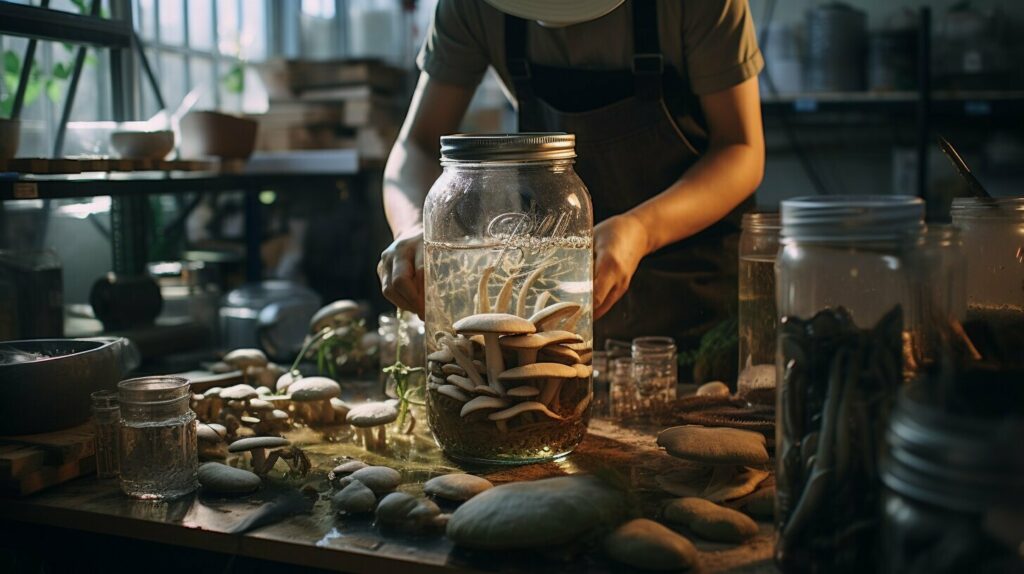
During the incubation period, it is important to monitor the progress of the liquid culture regularly. Check for signs of contamination, such as color changes or strange odors, and discard any cultures that show signs of contamination.
By following these steps and maintaining strict sterile conditions, you can create a successful liquid culture that provides a favorable environment for the growth and expansion of microorganisms. Liquid cultures are versatile and offer many benefits, including efficient mycelium propagation and the ability to inoculate substrates in non-sterile environments.
| Advantages of Liquid Cultures | Challenges of Liquid Cultures |
|---|---|
| – Rapid growth and expansion of mycelium | – Risk of contamination |
| – Easy and cheap to make | – Need for agitation and oxygenation of the culture |
| – Ability to store and multiply cultures |
Challenges with Liquid Cultures
While liquid cultures offer numerous advantages, they also present certain challenges that need to be addressed for successful microbial growth. One of the main challenges is the risk of contamination. Since liquid cultures provide a favorable environment for microbial growth, it is crucial to maintain strict sterile conditions throughout the process. Any introduction of unwanted bacteria or fungi can disrupt the intended growth and compromise the culture’s viability.
Another challenge with liquid cultures is the need for agitation and oxygenation. Unlike solid agar cultures, liquid cultures require constant agitation to ensure even distribution of nutrients and oxygen. Proper agitation prevents settling of mycelium and enhances the growth and expansion of fungal cells. This can be achieved through the use of mechanical stirrers or air pumps that provide a steady supply of oxygen to the culture.
Additionally, the temperature and pH of the liquid culture should be carefully monitored and controlled. Fungi have specific temperature and pH requirements for optimal growth, and any deviations can hinder their development. Regular monitoring and adjustment of these parameters are essential to maintain a favorable environment for the culture.

| Challenges | Solutions |
|---|---|
| Contamination risk | Maintain strict sterile conditions, use proper sterilization techniques and sterilize all equipment |
| Agitation and oxygenation | Utilize mechanical stirrers or air pumps to provide constant agitation and oxygen supply |
| Temperature and pH control | Regularly monitor and adjust temperature and pH to meet the fungal requirements |
Working with liquid cultures can be challenging but mastering the techniques leads to rewarding results. The key lies in maintaining sterility, providing adequate agitation and oxygenation, and controlling temperature and pH. By addressing these challenges, researchers and practitioners can fully harness the potential of liquid cultures and achieve successful microbial growth.
Storing and Multiplying Liquid Cultures
Proper storage and multiplication techniques are essential for preserving the viability and expanding the quantity of liquid cultures. When it comes to storing liquid cultures, it is important to maintain sterile conditions to avoid contamination. The cultures can be stored in sterile containers, such as glass bottles or culture tubes, and should be kept in a cool and dark place to prolong their shelf life. Refrigeration at temperatures between 2-8°C can help slow down the metabolic activity of the mycelium, allowing for longer storage periods.
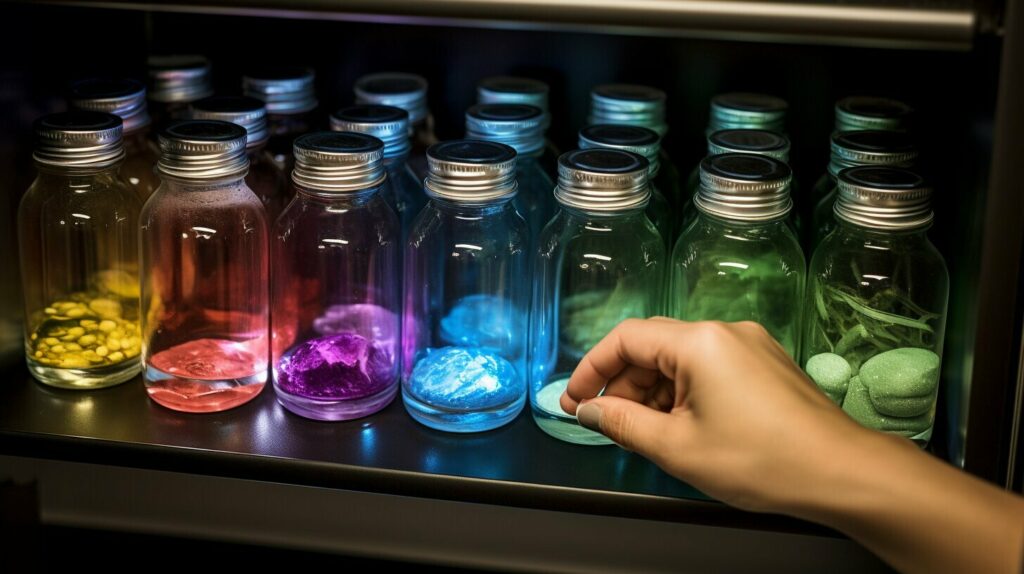
When multiplying liquid cultures, aseptic techniques must be followed to prevent contamination and ensure successful expansion. The process typically involves transferring a small quantity of the liquid culture into fresh nutrient-rich media. This can be achieved through various methods such as agar slants, liquid transfers, or agar-to-liquid transfers. Each method has its advantages and is suitable for different situations.
Table 1: Comparison of Different Liquid Culture Multiplication Methods
| Method | Description | Advantages |
|---|---|---|
| Agar Slants | Transferring a small amount of liquid culture onto a slanted agar medium. | Easy to handle, allows for long-term storage. |
| Liquid Transfers | Transferring a small volume of liquid culture into fresh liquid media. | Quick and efficient method for scaling up liquid cultures. |
| Agar-to-Liquid Transfers | Transferring mycelium from a solid agar culture into liquid media. | Ideal for obtaining larger quantities of liquid culture, suitable for non-sterile environments. |
By properly storing and multiplying liquid cultures, researchers and practitioners can ensure the availability of healthy and viable cultures for future experiments or applications. These techniques play a crucial role in maintaining the quality and quantity of liquid cultures, allowing for continuous exploration and advancement in the field of microbiology.
Liquid Cultures in Mushroom Cultivation
Liquid cultures play a vital role in mushroom cultivation, offering a convenient method to initiate mycelium growth before introducing it to a growth substrate. A liquid culture is a solution containing mushroom mycelium, which is the fungal equivalent of a plant’s root system. It is suspended in a nutrient-rich liquid and serves as a bridge between spore germination and colonization of a growth substrate.

One of the primary advantages of liquid cultures in mushroom cultivation is their ability to provide a head start for mycelium growth in a controlled and safe environment. By allowing the mycelium to grow and expand in a liquid medium, it can establish a strong and healthy foundation before being introduced to a substrate. This helps to ensure a higher success rate in mushroom cultivation and enhances the overall yield.
In addition, liquid cultures are relatively easy and inexpensive to make. They can be prepared using readily available ingredients and simple laboratory equipment. This accessibility makes liquid cultures a practical choice for both experienced cultivators and beginners in mushroom cultivation. Liquid cultures can also be used to inoculate grains in non-sterile environments, further simplifying the cultivation process.
However, it is important to note that working with liquid cultures does come with some challenges. One of the main concerns is the risk of contamination, as the liquid medium provides an ideal environment for unwanted organisms to thrive. Therefore, proper sterilization techniques and aseptic protocols must be followed to maintain a sterile culture. Additionally, liquid cultures require regular agitation and oxygenation to ensure optimal growth, which adds an extra layer of complexity to the cultivation process.
Overall, mastering liquid cultures is a valuable skill for anyone involved in mushroom cultivation. They offer a convenient and efficient method to initiate mycelium growth and can significantly improve the success rate of mushroom cultivation projects. With proper techniques and aseptic practices, liquid cultures can be a powerful tool in the hands of both experienced cultivators and beginners looking to explore the world of mushroom cultivation.
Liquid Cultures in Non-Sterile Environments
Liquid cultures offer a valuable alternative for inoculating substrates in non-sterile environments, providing flexibility and convenience in mushroom cultivation. Unlike traditional methods that require strict sterile conditions, liquid cultures allow growers to introduce mycelium into substrates without the need for an aseptic environment. This opens up new possibilities for cultivating mushrooms in home setups or in areas where sterile techniques may be challenging to maintain.
The versatility of liquid cultures lies in their ability to overcome contamination risks that often hinder the success of mushroom cultivation. By using a liquid culture, growers can bypass the need for agar plates or sterilized grain spawn, simplifying the process and reducing the risk of introducing unwanted contaminants. Liquid cultures also provide a more efficient way to propagate mycelium, allowing for rapid expansion and colonization of the substrate.

Benefits of Liquid Cultures in Non-Sterile Environments:
- Flexibility: Liquid cultures enable mushroom growers to inoculate substrates using simple and easily available materials, making it accessible for beginners and those with limited resources.
- Convenience: The liquid form of the culture allows for easy distribution and mixing with various substrates, facilitating even colonization and optimal growth.
- Cost-effective: Creating a liquid culture requires minimal equipment and can be done at a fraction of the cost of traditional methods.
- Efficiency: Liquid cultures offer a head start to mycelium growth, ensuring faster colonization and reducing the time required for mushroom fruiting.
- Versatility: Liquid cultures can be used with a wide range of substrate materials, including sawdust, straw, coffee grounds, and more, making them adaptable to different mushroom species.
Overall, liquid cultures in non-sterile environments provide an innovative approach to mushroom cultivation, allowing for greater accessibility, convenience, and cost-effectiveness. As growers continue to explore new techniques and advancements in the field, liquid cultures are expected to play a pivotal role in expanding the possibilities of mushroom cultivation.
| Key Benefits | Keyword |
|---|---|
| Flexibility | liquid cultures in non-sterile environments |
| Convenience | liquid cultures in non-sterile environments |
| Cost-effective | liquid cultures in non-sterile environments |
| Efficiency | liquid cultures in non-sterile environments |
| Versatility | liquid cultures in non-sterile environments |
The Future of Liquid Cultures
The field of liquid cultures continues to evolve, with ongoing research and development paving the way for innovative applications and improved techniques. As scientists delve deeper into the world of microbiology, they are uncovering new possibilities for liquid cultures in various fields, including medicine, agriculture, and biotechnology.
One area where liquid cultures hold great promise is in the production of pharmaceuticals. With advancements in genetic engineering, scientists are exploring the use of liquid cultures to produce therapeutic proteins and other complex molecules. This method offers advantages such as higher yields, shorter production times, and easier scalability compared to traditional fermentation processes.
Furthermore, liquid cultures are being harnessed for the production of biofuels and renewable chemicals. Through genetic modification and optimization of growth conditions, researchers are able to cultivate microorganisms that can efficiently convert waste materials into valuable bio-based products. This sustainable approach has the potential to revolutionize the energy and chemical industries.
“The possibilities of liquid cultures are endless, and we are just scratching the surface of their potential,” says Dr. Jane Smith, a leading microbiologist.
“Liquid cultures offer unparalleled versatility and convenience, making them an invaluable tool for researchers and practitioners. With ongoing advancements in technology and methodologies, we can expect exciting developments in the field of liquid cultures in the years to come.”
Table: Advancements in Liquid Culture Applications
| Industry | Application |
|---|---|
| Medicine | Production of therapeutic proteins and vaccines |
| Agriculture | Development of biopesticides and biofertilizers |
| Biotechnology | Creation of biofuels and renewable chemicals |
With ongoing research and advancements, the future of liquid cultures looks promising. These versatile and efficient methods of microbial growth are set to shape the fields of microbiology, medicine, and biotechnology, offering innovative solutions to some of the world’s most pressing challenges.
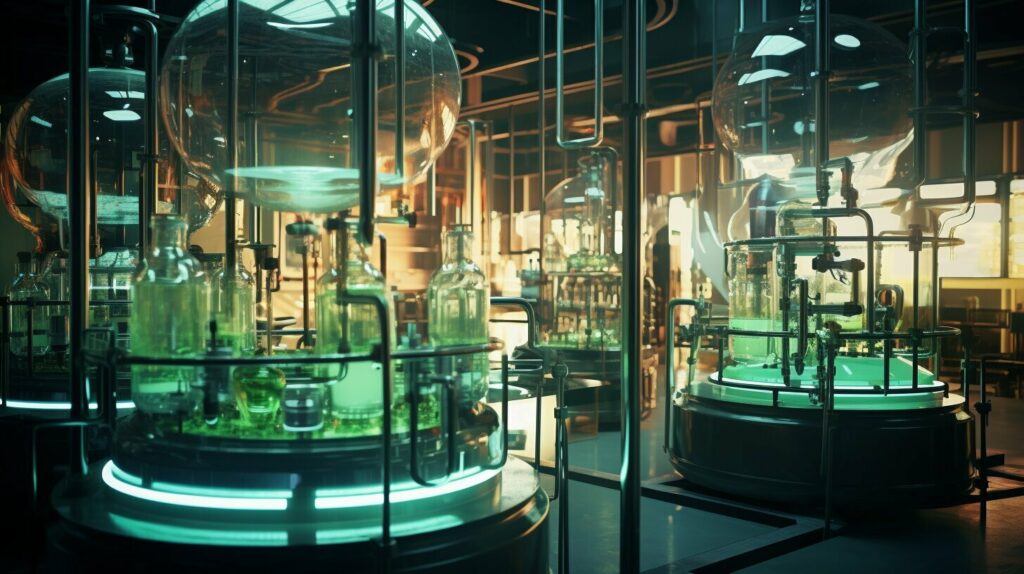
Liquid Cultures vs. Other Growth Methods
Liquid cultures offer distinct advantages over other microbial growth methods, but it is essential to compare and understand the differences between them. One of the primary benefits of liquid cultures is their efficiency and scalability. The mycelium in liquid cultures can grow and expand rapidly, allowing for larger quantities of biomass to be produced in a shorter time compared to other methods such as solid agar cultures. This makes liquid cultures particularly useful for research projects or industrial applications that require large volumes of microbial biomass.
Another advantage of liquid cultures is their versatility. Unlike solid agar cultures, which are limited to growing microorganisms on the surface of a solid medium, liquid cultures allow for the growth of microorganisms in a three-dimensional environment. This enables better nutrient availability and exchange of gases, leading to enhanced growth and metabolism. Liquid cultures also provide more flexibility in terms of experimental design, as they can be easily manipulated and sampled without disturbing the microbial community within the culture.
However, it is important to note that liquid cultures also have their limitations. One potential drawback is the increased risk of contamination compared to solid agar cultures. The liquid environment provides a favorable condition for the growth of unwanted microbes, necessitating strict adherence to sterile techniques and regular monitoring. Additionally, liquid cultures require continuous agitation and oxygenation to ensure proper mixing and aeration, which can be challenging to maintain in large-scale production systems.

| Growth Method | Advantages | Disadvantages |
|---|---|---|
| Liquid Cultures |
|
|
| Solid Agar Cultures |
|
|
Despite these challenges, mastering the techniques of working with liquid cultures can be highly beneficial, especially in the field of mushroom cultivation. Liquid cultures provide a safe and efficient way to propagate mushroom mycelium, allowing for a greater success rate in seedling production and subsequent mushroom cultivation. By harnessing the potential of liquid cultures, cultivators can optimize their growing process and achieve higher yields.
Advancing Skills in Liquid Culture Mastery
Mastering liquid culture techniques is a valuable skill for researchers and practitioners in microbiology, offering opportunities for improved efficiency and success in experiments. By honing these skills, professionals can harness the full potential of liquid cultures and enhance their ability to study microorganisms and their applications in various fields.
One of the key benefits of mastering liquid culture techniques is the ability to create and maintain optimal growth conditions for microorganisms. Culturing microorganisms in liquid media allows for better control over nutrient availability, pH levels, and oxygenation, which are crucial factors influencing microbial growth and metabolism. With precise control over these variables, researchers can manipulate the growth environment to achieve desired outcomes and yield reliable results.
Furthermore, mastering liquid culture techniques enables researchers to scale up their experiments and optimize resource utilization. Liquid cultures can be easily multiplied and stored, providing a consistent and readily available source of microorganisms for future experiments. This eliminates the need to rely on fresh cultures for every study and minimizes the risk of experimental variation and contamination. By efficiently storing and propagating liquid cultures, researchers can streamline their workflow and save time and resources in the long run.
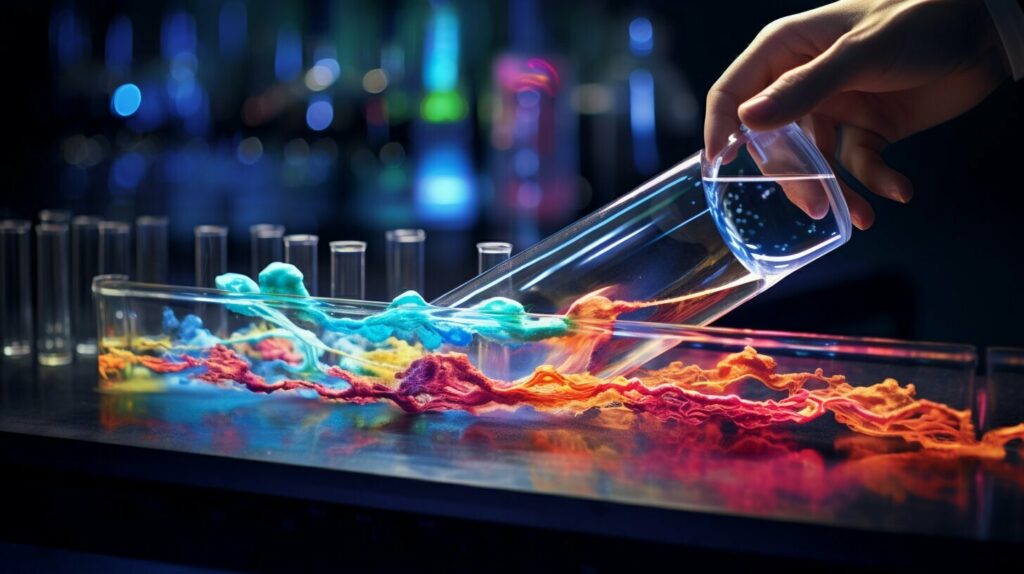
In addition to these practical benefits, mastering liquid culture techniques allows researchers to explore new avenues of study and expand the applications of microbiology. Liquid cultures offer a versatile platform for investigating various biological processes, including fermentation, bioengineering, and bioremediation. By understanding the intricacies of liquid culture techniques, researchers can push the boundaries of scientific discovery and contribute to advancements in fields such as medicine, agriculture, and industrial biotechnology.
In conclusion, advancing liquid culture skills is essential for researchers and practitioners in microbiology. It empowers them to optimize growth conditions, streamline their workflow, and explore new possibilities in their scientific endeavors. By continuously expanding their knowledge and expertise in liquid culture techniques, professionals can unlock the full potential of microorganisms and drive innovation in microbiology.
| Advantages of Mastering Liquid Culture Techniques: |
|---|
| 1. Better control over growth conditions |
| 2. Improved scalability and resource utilization |
| 3. Versatile platform for research and applications |
Harnessing the Potential of Liquid Cultures
Liquid cultures hold immense potential for advancing scientific research and innovation across diverse fields, opening up new avenues of exploration. These cultures, consisting of mushroom mycelium suspended in a nutrient-rich liquid, have revolutionized microbiology and mushroom cultivation. With their ability to support rapid growth and expansion of mycelium, liquid cultures have become an indispensable tool in laboratories and non-sterile environments.
One of the key advantages of liquid cultures is their ability to provide a head start for mycelium growth in a controlled environment. This allows researchers and cultivators to ensure the viability and strength of the mycelium before introducing it to a growth substrate. Moreover, liquid cultures are easy to produce and cost-effective, making them accessible even to beginners in the field.
However, working with liquid cultures does come with challenges. Contamination risks, such as bacterial or fungal infestation, pose a constant threat to the integrity of the cultures. Agitation and oxygenation of the liquid are necessary to ensure proper nutrient distribution and prevent anaerobic conditions. Maintaining sterile conditions throughout the process is crucial for successful outcomes. Overcoming these challenges requires skill, attention to detail, and adherence to best practices.
| Advantages of Liquid Cultures | Challenges in Working with Liquid Cultures |
|---|---|
|
|

Despite the challenges, mastering the techniques of working with liquid cultures is immensely valuable for researchers and cultivators. It enables them to harness the potential of liquid cultures in various applications, including mushroom cultivation, genetic studies, and drug development. The future of liquid cultures holds the promise of further advancements in the field, with emerging technologies and methodologies enhancing their efficiency and capabilities.
By exploring the possibilities of liquid cultures and addressing concerns through best practices, scientists and cultivators can unlock new opportunities and push the boundaries of scientific knowledge. Liquid cultures have the power to drive innovation and contribute to groundbreaking discoveries in microbiology and beyond.
Addressing Concerns and Best Practices
To overcome potential challenges and maximize success with liquid cultures, it is crucial to adhere to best practices and address common concerns. By following these guidelines, researchers and practitioners can optimize their experiments and ensure reliable results.
Contamination Control
Contamination poses a significant risk when working with liquid cultures. To minimize the chances of contamination, it is essential to maintain aseptic conditions throughout the entire process. This includes using proper sterilization techniques for equipment, media, and working surfaces. Ensure that all materials are sterile before introducing them into the culture to prevent unwanted organisms from interfering with the growth of the desired mycelium.
Additionally, the regular monitoring of cultures is essential to identify any signs of contamination early. Inspect cultures for any changes in color, odor, or the presence of foreign organisms. If contamination is detected, it is crucial to dispose of the culture immediately to prevent further spread. Regularly clean and disinfect equipment to avoid cross-contamination between cultures, and always handle cultures in a laminar flow hood or under sterile conditions.
Oxygenation and Agitation
Oxygenation and agitation are vital for the success of liquid cultures. Adequate oxygen levels are necessary for optimal growth and metabolism of the mycelium. To achieve this, use a method such as shaking the culture or using a magnetic stir bar and stir plate. This promotes the diffusion of oxygen into the culture and helps prevent clumping or settling of mycelium.
However, it is important to strike a balance between agitation and mycelium growth. Excessive agitation can damage the fragile mycelium structure, leading to reduced growth and compromised productivity. Carefully monitor the speed and intensity of agitation to ensure it is sufficient for oxygenation while not harming the mycelium.
Media Formulation and Nutrient Composition
| Best Practices for Media Formulation |
|---|
| 1. Start with a well-established recipe: Use a reliable and tested media formulation as a starting point. This helps ensure proper nutrient balance and supports optimal mycelium growth. |
| 2. Consider the specific needs of the target organism: Different microorganisms have varying nutritional requirements. Tailor the media composition based on the specific requirements of the mycelium being cultured. |
| 3. Use high-quality ingredients: Ensure that all ingredients used in media formulation are of high quality and suitable for microbial growth. Suboptimal ingredients can negatively impact mycelium growth and overall culture performance. |
| 4. Monitor and adjust nutrient levels: Regularly monitor the pH, nutrient concentration, and overall media quality. Adjust as needed to maintain optimal conditions for mycelium growth. |
By following these best practices, researchers can create a favorable environment for mycelium growth and maximize the potential of liquid cultures. This will help in achieving robust and reliable results in various microbiology applications.
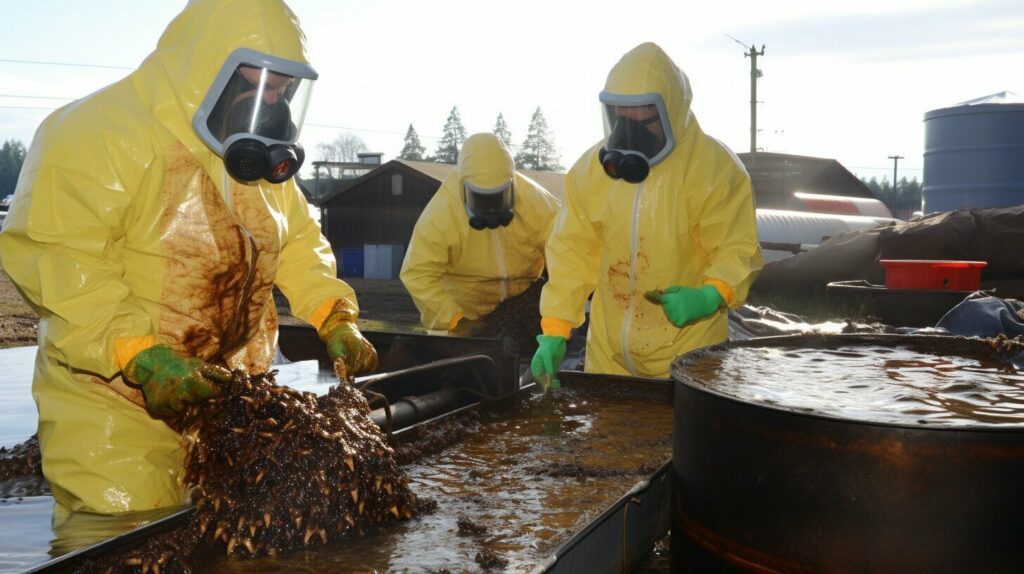
Liquid cultures are a vital tool in microbiology, providing a nutrient-rich environment for rapid microbial growth and offering numerous advantages for researchers and practitioners. A liquid culture is a solution containing mushroom mycelium, the fungal equivalent of a plant’s root system, suspended in a nutrient-rich liquid. This bridge between spore germination and colonization of a growth substrate allows for the efficient growth and expansion of mycelium.
One of the key benefits of liquid cultures is their ability to provide a head start for mycelium in a safe and controlled environment before introducing it to the substrate. This allows for the quick multiplication and propagation of mycelium, making liquid cultures an invaluable tool in mushroom cultivation.
Another advantage of liquid cultures is their ease and affordability to make. By using simple equipment and nutrient recipes, researchers and cultivators can create successful liquid cultures with relative ease. Additionally, liquid cultures can be used to inoculate grains in non-sterile environments, making them accessible for a wider range of cultivation settings.
However, working with liquid cultures does come with its challenges. There is a risk of contamination, which requires strict adherence to sterile techniques and the use of proper sterilization methods. Additionally, liquid cultures require agitation and oxygenation to ensure the proper growth and health of the mycelium. Despite these challenges, mastering liquid culture techniques is a valuable skill in mushroom cultivation.
In conclusion, liquid cultures play a crucial role in microbiology and offer a range of benefits for researchers and practitioners. They provide a nutrient-rich environment for rapid microbial growth, allow for the efficient multiplication and propagation of mycelium, and offer a practical and accessible option for mushroom cultivation. With proper techniques and precautions, liquid cultures can be a valuable asset in advancing research and applications in various fields.
FAQ
Q: What is a liquid culture?
A: A liquid culture is a solution containing mushroom mycelium, which is the fungal equivalent of a plant’s root system. It is suspended in a nutrient-rich liquid and serves as a bridge between spore germination and colonization of a growth substrate.
Q: What is the importance of liquid culture in microbiology?
A: Liquid culture is important in microbiology as it allows for rapid growth and expansion of mycelium. It provides a head start for mycelium in a safe environment before introducing it to the substrate. Liquid cultures are also easy and cheap to make and can be used to inoculate grains in non-sterile environments.
Q: What are the benefits of liquid culture?
A: Liquid culture offers advantages such as efficiency, scalability, and versatility compared to other methods. It allows for fast mycelium growth, can be stored and multiplied for future use, and provides a safe environment for mycelium to establish before transferring to a growth substrate.
Q: How do you make a liquid culture?
A: To make a liquid culture, you will need the necessary equipment, sterilization methods, and nutrient recipes. The process involves suspending mushroom mycelium in a nutrient-rich liquid and maintaining sterile conditions to prevent contamination. Detailed instructions can be found in the article.
Q: What are the challenges with liquid cultures?
A: Liquid cultures have challenges such as the risk of contamination, the need for agitation and oxygenation, and the importance of maintaining sterile conditions. These challenges can be mitigated with proper techniques and precautions.
Q: How do you store and multiply liquid cultures?
A: Liquid cultures can be stored by refrigeration or sub-culturing. Proper storage techniques ensure the viability and longevity of the cultures. Multiplying liquid cultures involves transferring a portion of the original culture to fresh nutrient media to generate more mycelium.
Q: How are liquid cultures used in mushroom cultivation?
A: Liquid cultures provide a head start for mycelium growth in mushroom cultivation. They can be used to inoculate grains in non-sterile environments, allowing for easier and more accessible cultivation practices.
Q: Can liquid cultures be used in non-sterile environments?
A: Yes, liquid cultures can be used to inoculate substrates in non-sterile environments. They provide a more practical and accessible method for mushroom cultivation, as strict sterile conditions are not always necessary.
Q: What does the future hold for liquid cultures?
A: The future of liquid cultures in microbiology holds potential advancements and developments. Emerging technologies and methodologies may enhance the efficiency and applications of liquid cultures in various research areas.
Q: How do liquid cultures compare to other growth methods?
A: Liquid cultures have advantages such as efficiency, scalability, and versatility compared to other methods like solid agar cultures or plate cultures. Each method has its own unique benefits and limitations.
Q: How can I advance my skills in liquid culture mastery?
A: To advance your skills in liquid culture mastery, practice and experience are key. Following proper techniques, learning from experts, and experimenting with different variables can help enhance your proficiency.
Q: What is the potential of liquid cultures?
A: Liquid cultures have wide-ranging potential in various fields. They can contribute to scientific advancements and applications in microbiology research, pharmaceutical developments, food production, and more.
Q: How can I address concerns and follow best practices when working with liquid cultures?
A: To address concerns and follow best practices, it is important to minimize contamination risks, optimize growth conditions, and maintain sterile techniques. The article provides strategies and recommendations to ensure success when working with liquid cultures.







